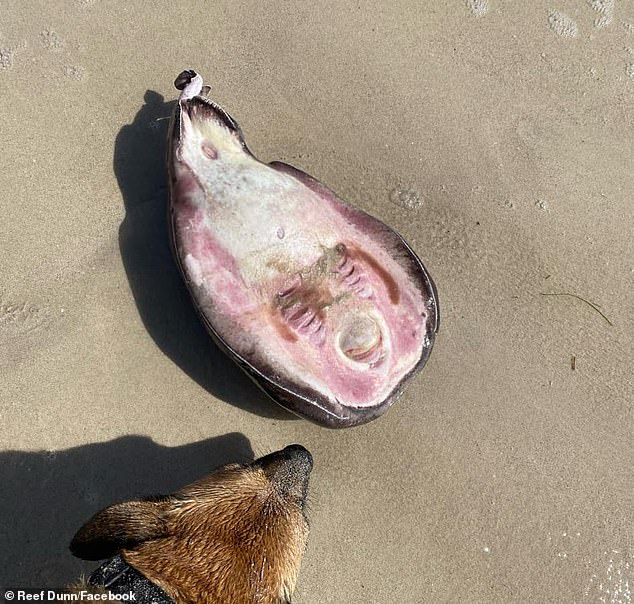Numbfish: Mystery creature dubbed ‘The Blob’ washes up on Aussie beach – so what on Earth is it?
A mysterious ‘blob’ that washed up on a beach in Western Australia has been identified by locals who remember the sea creature’s ‘shocking’ sting.
The beachgoer discovered the creature at Quinns Rock and took to Facebook for answers.
“Can anyone help me identify this thing?” wrote Reef Dunn on the Snorkeling Western Australia page.
A mysterious blob washed up on a beach in Western Australia, later identified as a coffin trough

The strange-looking creature is also called an insensate fish and can deliver a shock of up to 200 volts.
The mysterious blob provoked a flood of reactions experienced ocean lovers which revealed it to be a coffin ray or ‘Numbfish’, a type of electric beam that can produce a shock of up to 200 volts, according to the Dive Database.
One member posted a video in the comments about his encounter with the unusual species while spearfishing.
“The biggest I ever saw (the Coffin Ray) was not hurt when the (octopus) picked it up, Occy was dead from the electric shock, I was hit too,” he wrote underneath.
“My buddy pushed it away with his strike end because it shocked him, twenty times more powerful than a shark shield,” he continued.
Other members shared their experiences, comparing the sting of the ray to an electric fence that “gave a good buzzing sound, as I discovered years ago when I touched one.”

Coffin rays typically hide under the sand in bays and shallow waters in most states and territories
Commentators responded that the discovery was “my nightmare come to life,” while others mocked the furore, calling it “a tadpole that decidedly got too close to Fukashima!”
According to the Australian Museum, the Coffin Ray is well known to divers who often encounter the creature in shallow waters where they hide under the sand in bays and estuaries throughout Australia.
They are particularly common along the coasts of WA, NSW and South Australia, but appear to avoid northern waters in the Northern Territory and Queensland, as well as southern regions in Victoria and Tasmania.
